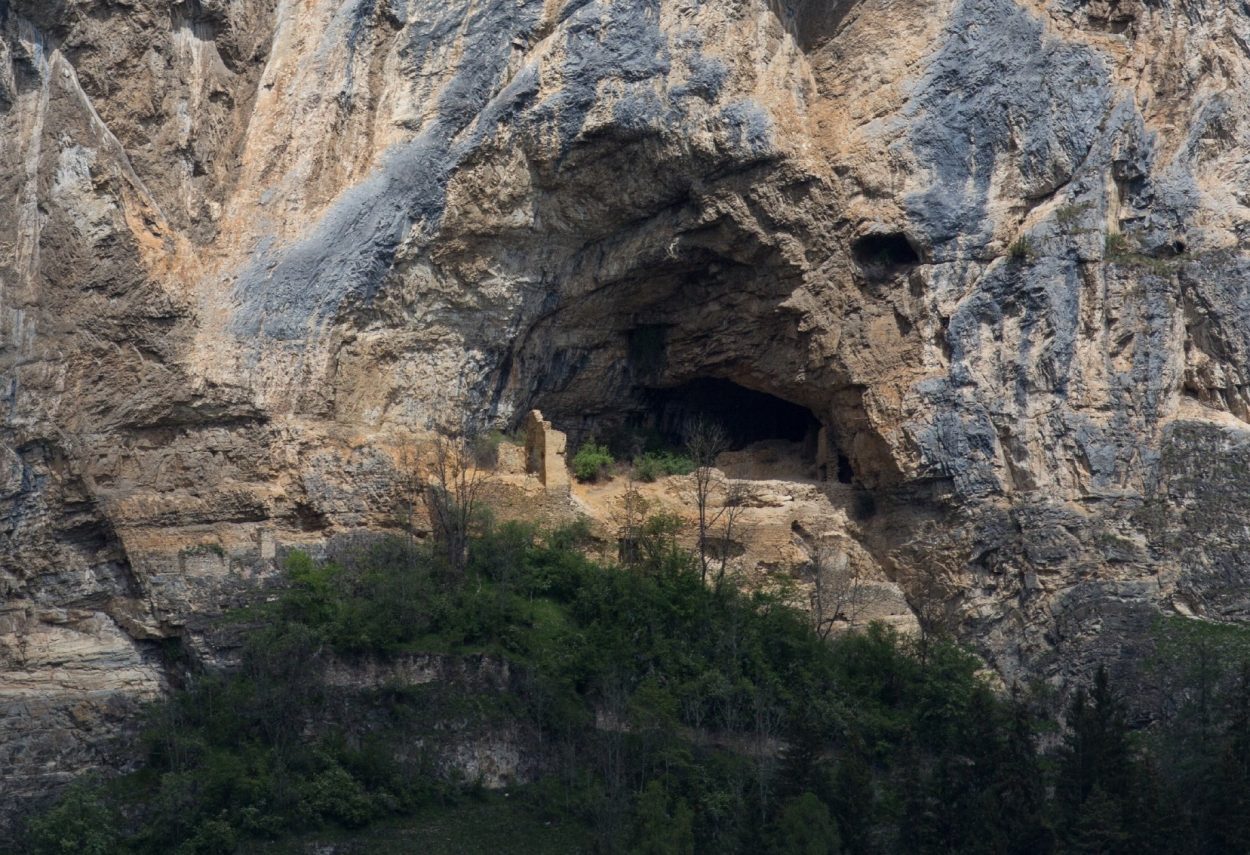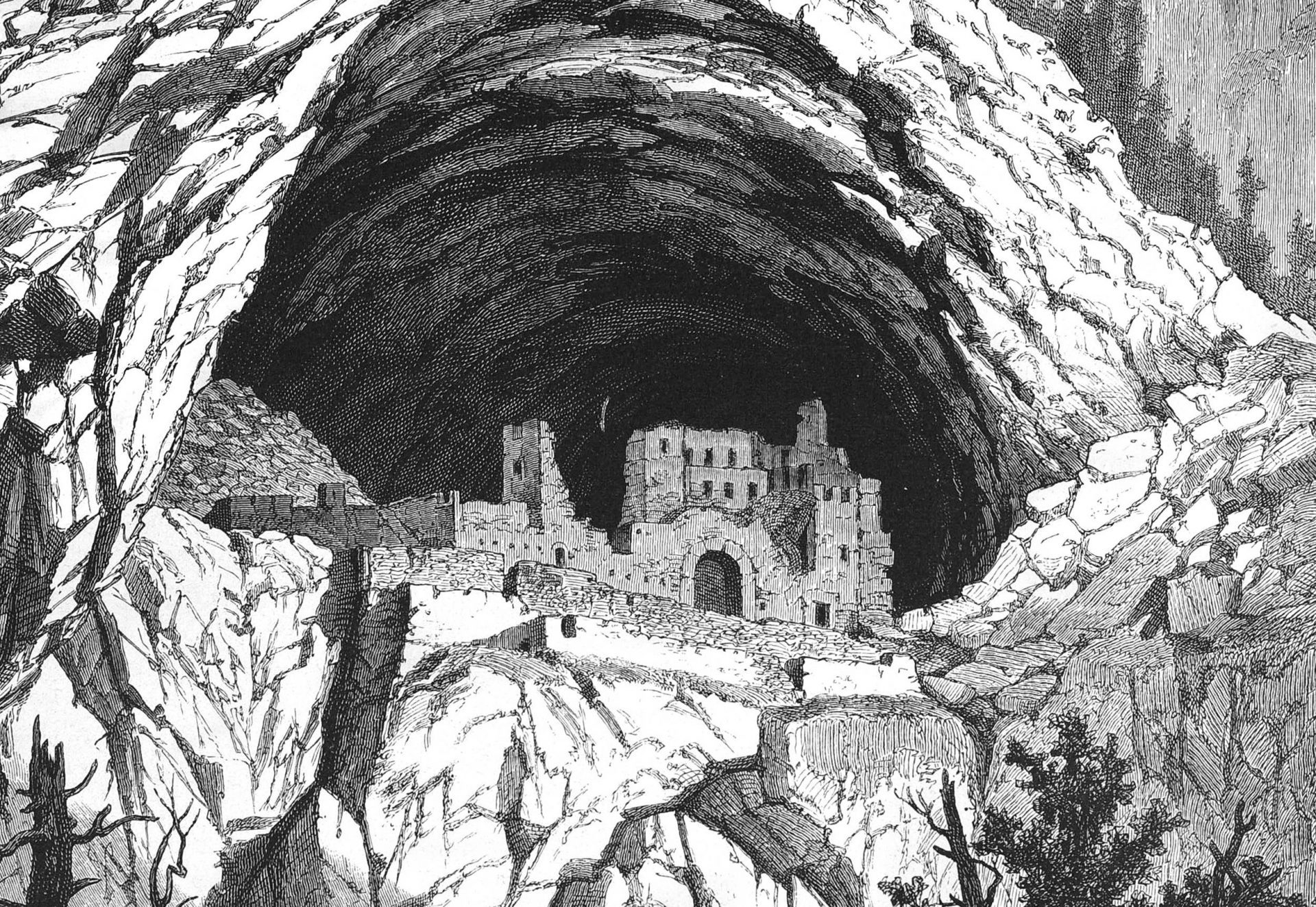Puxerloch refers to the two adjacent cave castles of Luegg and Schallaun, located in the municipality of Teufenbach-Katsch, Austria.
The castles were constructed in the limestone Puxer Wand (Cliff of Pux) on the southern slope of the Pleschaitz mountain at a height of 75 feet above the Mur valley floor.
Schallaun was constructed in the smaller of the two caves, which according to tradition derives its name from Chalons, when a knight of Chalons during the reign of Charlemagne eloped with a Saxon princess and took refuge in the cave where he constructed his castle.
Another local legend claims that Schallaun was haunted by a shadowless man, who due to his curse was distressed over his matrimonial prospects and took refuge in the permanent shade of the cave. He would only emerge on moonless nights, where he abducted a passing peasant girl and carried her back to the shadowless depths of Schallaun.
Very little is known about the history of Schallaun, but the castle was first mentioned in a document from 1181 that mentions a Machward of Schallaun. The lords of Schallaun belonged to the local lower nobility with relations to the lords of Sauran, with the latter having ownership of Schallaun in 1472. The castle changed hands several times over the centuries, with decay and eventual abandonment by the 16th century.

Schallaun consists of several levels, with a lower and upper courtyard accessed by rock cut pathways and stairs. The cave served as the upper court and had a long inner cleft passage cellar that utilised the naturally regulated temperature of the cave environment.
Luegg Castle was constructed in a larger cave to the west of Schallaun and was an imposing fortress situated within the cave mouth. The castle was founded during the 12th century, with further modifications and living quarters added during the 14th century.
Like Schallaun, Luegg changed hands several times over the following centuries, but was mostly destroyed by a criminal gang who took up residence at the beginning of the 19th century.
The castle consisted of an outer courtyard surrounded by a wall, accessed by a gatehouse and a pathway from the valley floor. Within the cave interior was an inner courtyard and several rooms, leading to a labyrinth of subterranean passages that ran for several hundred metres.
Header Image – Luegg cave castle. A sketch by Robert Zander (1877) – Public Domain





